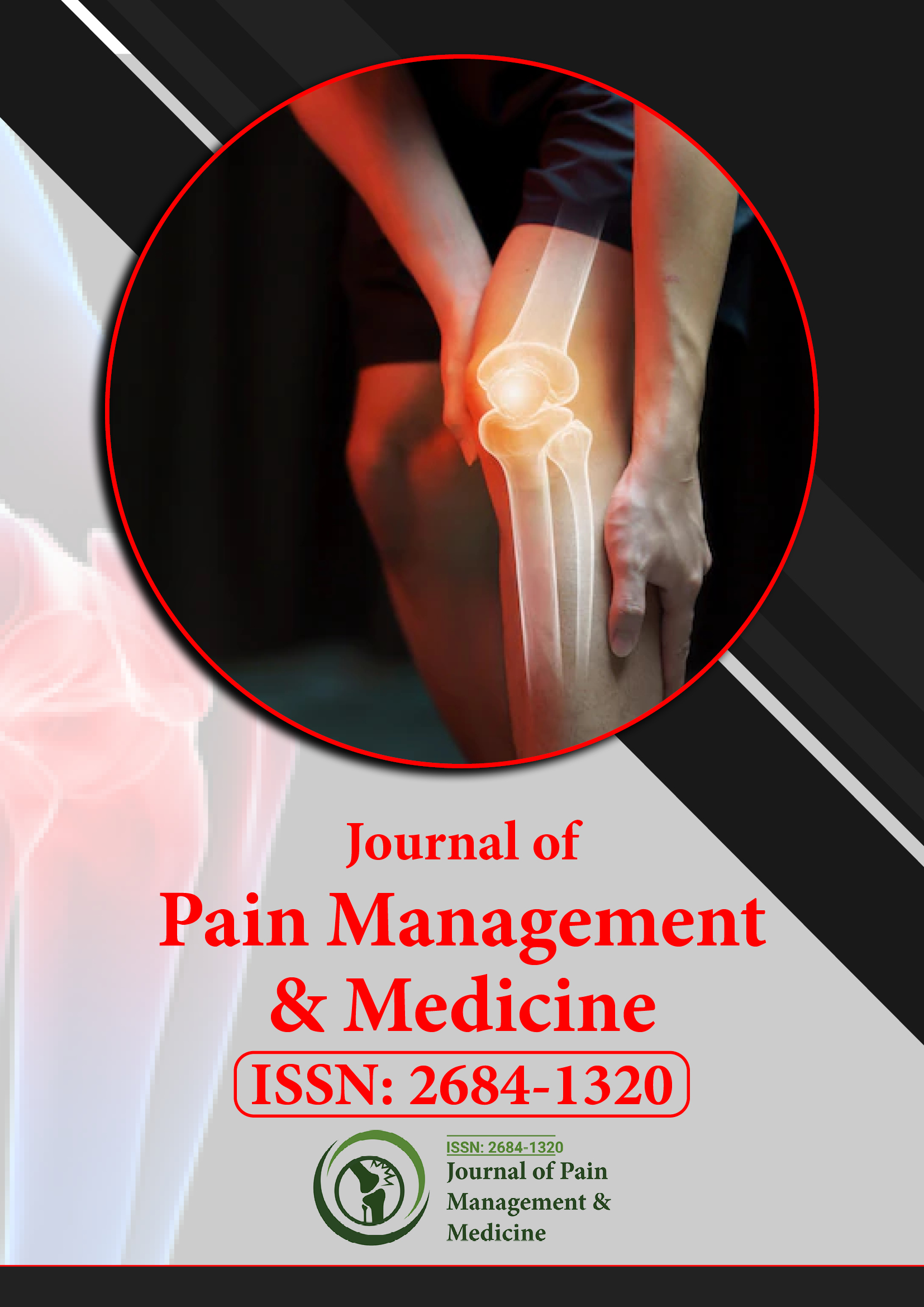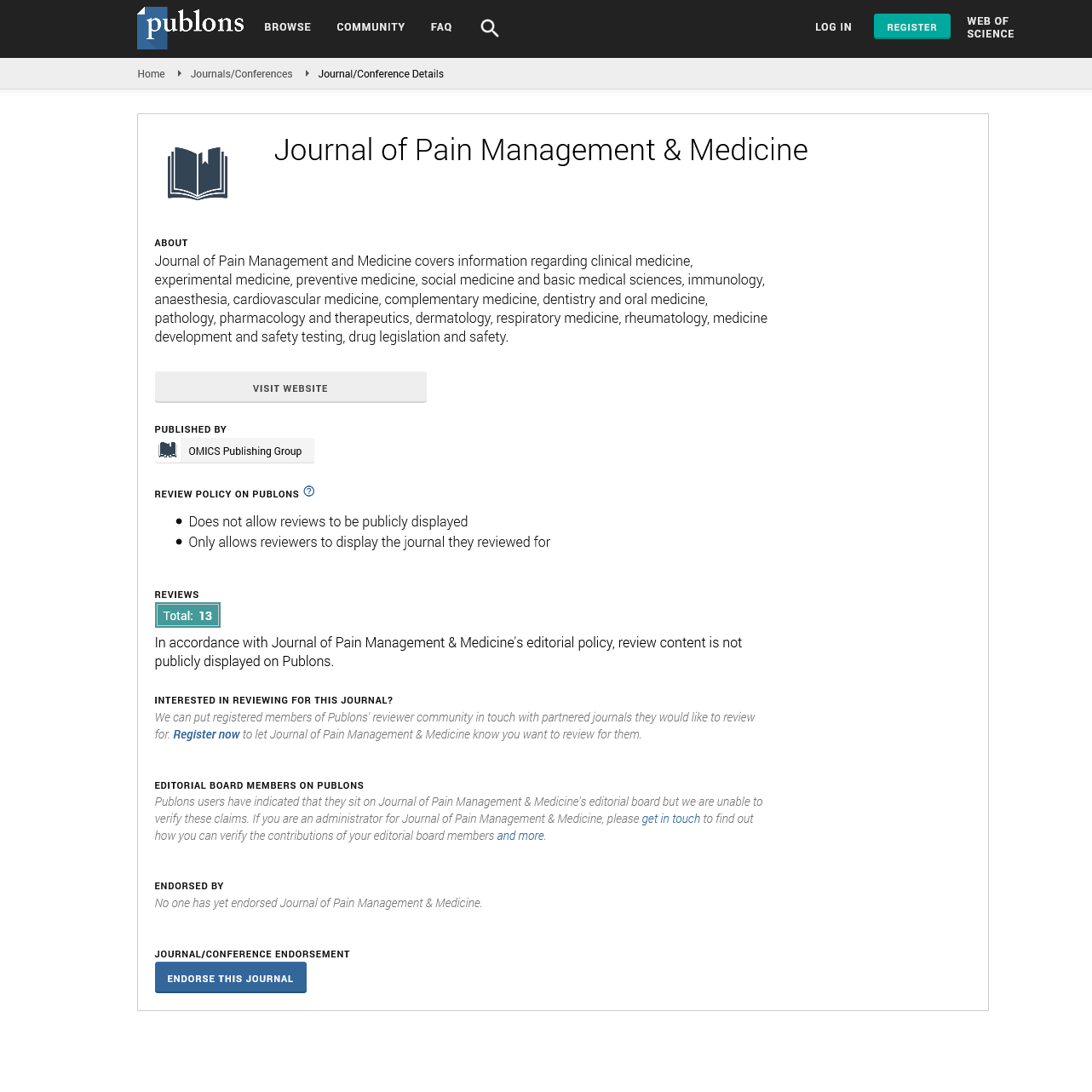Indexed In
- RefSeek
- Hamdard University
- EBSCO A-Z
- Publons
- Euro Pub
- Google Scholar
- Quality Open Access Market
Useful Links
Share This Page
Journal Flyer

Open Access Journals
- Agri and Aquaculture
- Biochemistry
- Bioinformatics & Systems Biology
- Business & Management
- Chemistry
- Clinical Sciences
- Engineering
- Food & Nutrition
- General Science
- Genetics & Molecular Biology
- Immunology & Microbiology
- Medical Sciences
- Neuroscience & Psychology
- Nursing & Health Care
- Pharmaceutical Sciences
Perspective - (2025) Volume 11, Issue 1
Acupuncture as an Adjunctive Therapy for Chronic Migraine: A Randomized Controlled Trial with Long-Term Follow-Up
Yui M. Fujita*Received: 01-Mar-2025, Manuscript No. JPMME-25-28848; Editor assigned: 03-Mar-2025, Pre QC No. JPMME-25-28848 (PQ); Reviewed: 17-Mar-2025, QC No. JPMME-25-28848; Revised: 24-Mar-2025, Manuscript No. JPMME-25-28848 (R); Published: 31-Mar-2025, DOI: 10.35248/2684-1320.25.11.318
Description
The burden of Chronic Migraine (CM) is substantial, impacting individuals' quality of life and productivity. While various pharmacological and non-pharmacological treatments exist, many patients continue to experience significant headache frequency and intensity. Acupuncture, a traditional Chinese medicine technique involving the insertion of thin needles into specific points on the body, has garnered increasing interest as a potential adjunctive therapy for CM. A well-designed Randomized Controlled Trial (RCT) with long-term follow-up investigating the efficacy of acupuncture in this context offers valuable insights into its role in the comprehensive management of CM.
One of the most critical aspects to examine is the methodological rigor of the RCT. Key elements include appropriate randomization procedures, the use of a credible sham acupuncture control group (to account for placebo effects), blinding of participants and assessors (where feasible), clearly defined inclusion and exclusion criteria, standardized acupuncture protocols (including point selection, needle depth, and stimulation), and the adequate statistical power to detect clinically meaningful differences. The success of the trial in mitigating bias will significantly influence the reliability and interpretability of its findings.
The choice of primary and secondary outcome measures is also paramount. The primary outcome should ideally be a patient-centered measure of migraine frequency (e.g., number of headache days per month). Secondary outcomes should encompass measures of headache intensity, duration, functional disability (e.g., using validated migraine-specific questionnaires), medication use (both acute and preventive), and overall quality of life. The inclusion of these diverse outcomes will provide a comprehensive assessment of acupuncture's impact on the multifaceted nature of CM.
The characteristics of the study population are important to consider for generalizability. The trial should clearly describe the demographic and clinical features of the participants, including the duration and frequency of their migraines, prior treatment history, and any comorbidities. Understanding the specific subgroup of CM patients who may benefit most from acupuncture is crucial for clinical application.
The long-term follow-up component of the trial is particularly significant in the context of chronic conditions like migraine. Assessing the sustained effects of acupuncture beyond the active treatment period is essential to determine its potential for providing lasting relief and influencing the natural history of CM. The study should clearly define the duration of follow-up and the methods used to collect outcome data at these later time points.
The comparison of acupuncture to a credible sham control is a key strength of a rigorous RCT. Sham acupuncture, involving needling at non-acupoints or using non-penetrating needles, helps to disentangle the specific physiological effects of acupuncture from the non-specific placebo effects associated with receiving treatment and the expectation of benefit. The effectiveness of the sham control in maintaining participant blinding is crucial for the validity of the results.
The magnitude of the observed treatment effects and their clinical significance are important considerations. Even if statistically significant differences are found between the acupuncture and sham groups, the clinical relevance of these differences (e.g., the actual reduction in headache days or improvement in disability scores) needs to be carefully evaluated based on established Minimal Clinically Important Difference (MCID) values.
The safety profile of acupuncture as observed in the trial should also be reported. While acupuncture is generally considered safe when performed by trained practitioners, the study should document any adverse events experienced by participants in both the acupuncture and control groups.
Finally, the implications of the findings for clinical practice and future research warrant discussion. If the RCT demonstrates a significant and sustained benefit of acupuncture as an adjunctive therapy for CM, it could support its integration into multidisciplinary pain management approaches. The study should also highlight any remaining uncertainties and suggest directions for future research, such as investigating the optimal acupuncture protocols, identifying predictors of treatment response, and exploring the underlying mechanisms of action.
In conclusion, a well-conducted RCT with long-term follow-up evaluating acupuncture as an adjunctive therapy for chronic migraine has the potential to provide valuable evidence for its efficacy and safety. By rigorously addressing methodological considerations, assessing relevant outcomes, and interpreting the findings in the context of clinical significance, such a study can inform clinical guidelines and contribute to improved management strategies for individuals living with this debilitating condition.
Citation: Fujita YM (2025) Acupuncture as an Adjunctive Therapy for Chronic Migraine: A Randomized Controlled Trial with Long-Term Follow Up. J Pain Manage Med. 11.318.
Copyright: © 2025 Fujita YM. This is an open access article distributed under the terms of the Creative Commons Attribution License, which permits unrestricted use, distribution, and reproduction in any medium, provided the original author and source are credited.

